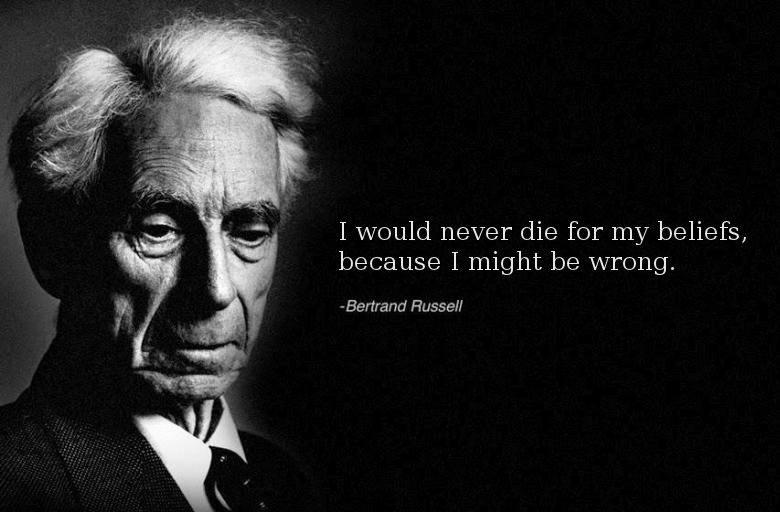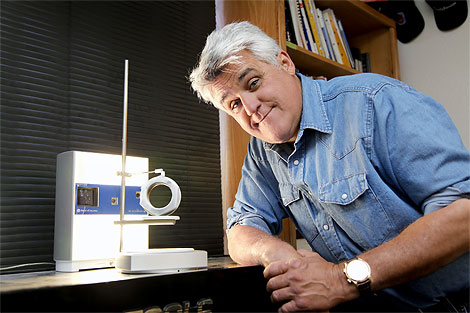Archive for the ‘Seeing Things As They Are’ Category
Why Tough Choices Are Tough
 This week my son made a difficult choice – he chose between two things he loves.
This week my son made a difficult choice – he chose between two things he loves.
The easy choice was to say yes to both, but in reality, there was not enough time. And in reality, the easy yes was a masquerade. It was really a slow, painful no with rippling consequences to his future. The tough choice did not come immediately and it did not come easy. But in the end, he was ready to make it because he saw things not as he wanted them to be, but as they were.
Once he decided he was going to choose, he had to decide which to choose. A tough choice made tougher because one is mainstream and the other on the fringe. It was clear there were far more overt repercussions with a no to the mainstream. Simply put, the powerful mainstream would not understand. But to his credit, he recognized the mainstream cares about itself, not him. Also, it was clear the fringe accepts him for him. So he sat himself in the future, figured out what was best for the soon-to-be him, and chose the fringe.
Once he decided which to chose, he had to decide how to choose. The easy choice was to slink quietly into the fringe never to be seen again. This was another masquerade. It was really an opportunity to self-devalue his decision and a setup for never ending ridicule over the remainder of his high school career. Instead, he made the tough choice to speak truth to the mainstream authority – face-to-face.
He got up early and met the coach in his office. The gist of the meeting – I’m sad, but this is my choice and why I’m choosing.
To the coach’s great credit, though disappointed, he understood and thanked Ethan for meeting face-to-face. And though emotionally wobbly after the meeting, because he declared his choice and was validated, he stood taller. And once validated by the head of the mainstream, there was no room for ridicule.
This week my son showed me what courage is. And he taught me an important lesson – tough decisions are tough, but we’re better off for making them.
I’m proud of him.
The Pilgrimage of Change
 The pilgrimage of change is hard.
The pilgrimage of change is hard.
Before we start, we must believe there’s a way to get there.
Before that, we must believe in the goodness of the destination.
Before that, we must believe there’s a destination.
Before that, we must want something different.
Before that, we must see things as they are.
Before that, we must want to understand.
Before that, we must be curious.
And to do that, we must believe in ourselves.
A Fraternity of Team Players
 It’s easy to get caught up in what others think. (I fall into that trap myself.) And it’s often unclear when it happens. But what is clear: it’s not good for anyone.
It’s easy to get caught up in what others think. (I fall into that trap myself.) And it’s often unclear when it happens. But what is clear: it’s not good for anyone.
It’s hard to be authentic, especially with the Fraternity of Team Players running the show, because, as you know, to become a member their bylaws demand you take their secret oath:
I [state your name] do solemnly swear to agree with everyone, even if I think differently. And in the name of groupthink, I will bury my original ideas so we can all get along. And when stupid decisions are made, I will do my best to overlook fundamentals and go along for the ride. And if I cannot hold my tongue, I pledge to l leave the meeting lest I utter something that makes sense. And above all, in order to preserve our founding fathers’ externally-validated sense of self, I will feign ignorance and salute consensus.
It’s not okay that the fraternity requires you check your self at the door. We need to redefine what it means to be a team player. We need to rewrite the bylaws.
I want to propose a new oath:
I [state your name] do solemnly swear to think for myself at all costs. And I swear to respect the thoughts and feelings of others, and learn through disagreement. I pledge to explain myself clearly, and back up my thoughts with data. I pledge to stand up to the loudest voice and quiet it with rational, thoughtful discussion. I vow to bring my whole self to all that I do, and to give my unique perspective so we can better see things as they are. And above all, I vow to be true to myself.
Before you’re true to your company, be true to yourself. It’s best for you, and them.
Separation of church and state, yes; separation of team player and self, no.
Climbing The Branches Of The Problem Tree
 The problem tree is big, old, and rugged with a fully developed branch network and the deepest roots. And nestled in its crown, set directly over the trunk, is the hidden tree house where the problem solvers play.
The problem tree is big, old, and rugged with a fully developed branch network and the deepest roots. And nestled in its crown, set directly over the trunk, is the hidden tree house where the problem solvers play.
The problem tree has a left and right, with its why branches to the right and why-nots to the left. To the right, the biggest why limbs grow from the trunk then split into a series of smaller why branches which terminate at the why leaves. It’s the same on the left – big why-not limbs, why-not branches, why-not leaves.
To start their game, the problem solvers first agree on the biggest why limbs – the main reasons why to solve the problem. Once labeled, the team asks why again, and builds out the why side of the canopy – narrowing as they go. They continue their hierarchical why mapping until they get to the why leaves – the lowest-level whys. The last part is most tenuous because as the branches get smaller they can’t hold the weight and they sway in the political wind. But as the organization watches impatiently, the problem solvers know they must hang onto the smallest branches and stretch themselves hard to reach the leaves.
Once the whys are mapped the solvers know why they must solve the problem. They know who wants it solved (the biggest branches can have their own sponsor) and how the whys (and their sponsors) compliment or compete. And where the rubber meets the road (leaf level), they know why it must be solved – think manufacturing floor. Like a spider web, the why network sticks the solvers to the right problem.
Novice solvers think their ready to solve, but the seasoned climbers know it’s time swing on the wild side. It’s time to climb where few dare – the politically charged left side – the why-nots. Slowly, carefully, the climbers step from the safety of their tree house and explore why the company cannot, has not, or may not want to solve the problem. There are usually three big why-not branches – constraints, capability, and culture.
When the solvers shimmy out on the constraint branch, they usually find the smaller no-time-to-solve-it branch, with its leaves of – existing operating plans, product launches, other big problems, unfilled open positions, and reduced headcount. Though real, these branches are tough to talk about because the organization does not want to hear about them. And, sometimes, for all their dangerous climbing and shimmying, the solvers are accused of not being team players.
Their climb on the capability branch is challenging, but not for its complexity. There’s usually one branch – we don’t know how to do it, with a couple leaves – we’ve never done it before and we don’t do it that way. The capability branch is difficult because it causes the organization to overtly admit a fundamental gap. Also, it threatens the subject matter experts, who are important to the solution.
The culture branch is toughest of all. Its limbs can be slippery and sometimes have cover names (so it’s difficult for me to list them), but thematically, the best climbers know the branches represent the worn patterns of company behavior. Often, the behaviors (and the climate they create) have not been formalized, and shining a light on them may is too bright for some. But when the solvers find a why-not branch that cuts across one of these worn cowpaths, that’s just what they must do. Because without changing the behavioral pattern, there can be no solution.
With the problem tree fully built-out on a single page, it’s clear why the problem should be solved and what’s in the way (why-not). And when the solvers present it, the company decides if the whys are important enough to overcome the why-nots. If it’s a go, the first step is to prune the why-nots – resources to solve the constraint problems, tools and training to improve the capability problems, and a change in leadership behavior to solve the cultural problems. After those are taken care of, the problem definition phase comes to a close.
The problem tree defines the problem, it does not solve it. But through the process of building it out, the problem solvers (problem definers) help the company clear cut the forest of why-nots. Now, standing tall, standing alone, clearly seen for what it is, solving the problem is a breeze.
Not Invented Here
 Not Invented Here (NIH) is ever-present and misunderstood.
Not Invented Here (NIH) is ever-present and misunderstood.
An operational definition of NIH: Group 1 creates new thinking that falls within the official domain of Group 2. When presented with the new thinking, Group 2 rejects it.
It is said Group 2 rejects new thinking because they’re threatened. But that’s too high level to be helpful. To get at the root of it, we need to dig.
First, some NIH:
- Your new thinking is out of alignment with my priorities. Even if I spend a lot of time to understand it, I’m afraid I’ll fail. I reject your new thinking.
- Your new thinking is out of alignment with responsibility. (That thinking should come from me.) If I adopt your new thinking, I’ll look stupid, and I’m afraid I’ll fail. I reject your new thinking.
- Your new thinking is out of alignment with my knowledge. I’m afraid I’ll fail. I reject your new thinking.
- Your new thinking is out of alignment with how I do things. I’m afraid I’ll fail. I reject your new thinking.
Now, some non-NIH :
- My priorities are out of alignment with your new thinking. Though I already have several good ideas that I don’t have time for, can you give me more details so together we can combine the best elements?
- My responsibility is out of alignment with your new thinking, but your new thinking is good. Can you give me more details so together we can investigate possibilities?
- My knowledge is out of alignment with your new thinking. Can you give me more details so we can learn together?
- My way of doing things is out of alignment with your new thinking. Can you give me more details so together we can rethink things?
The key to NIH reduction is to create alignment. With your new thinking not yet fully formed, ask Group 2 for their input. Better yet, ask for their help. Tell them what you don’t know, tell them what you have wrong, tell them how they have a better perspective because it’s their domain, and ask them to help improve it. (All this is best done informally and off-line, at least to start.)
One little-known fact about NIH – it’s pronoun sensitive. Take care to replace I, you, and yours with we.
Thoughts on Vacation
Take fewer longer vacations at the expense of shorter ones.
Work hard, but on something else.
On route to your destination, throw your cell phone from a moving vehicle.
Forget about your work so you can do it better when you return.
Don’t check in at work – that undoes all the relaxation.
Vacation with kids, and take your cues from them.
The Dark Art of Uncertainty
 Engineers hate uncertainty. (More precisely, it scares us to death.) And our role in the company is to snuff it out at every turn, or so we think.
Engineers hate uncertainty. (More precisely, it scares us to death.) And our role in the company is to snuff it out at every turn, or so we think.
To shield ourselves from uncertainty, we take refuge in our analyses. We create intricate computer wizardry to calm our soles. We tell ourselves our analytic powers can stand toe-to-toe with uncertainty. Though too afraid to admit, at the deepest level we know the magic of our analytics can’t dispatch uncertainty. Like He-Who-Should-Not-Should-Be-Named, uncertainty is ever-present and all-powerful. And he last thing we want is to call it by name.
Our best feint is to kill uncertainty before it festers. As soon as uncertainty is birthed, we try slay it with our guttural chant “It won’t work, it won’t work, it won’t work”. Like Dementors, we drain peace, hope, and happiness out of the air around a new idea. We suck out every good feeling and reduce it to something like itself, but soulless. We feed on it until we’re left with nothing but the worst of the idea.1
Insidiously, we conjure premonitions of mythical problems and predict off-axis maladies. And then we cast hexes on innovators when they don’t have answers to our irrelevant quandaries.
But our unnatural bias against uncertainty is misplaced. Without uncertainty there is no learning. Luckily, there are contrivances to battle the dark art of uncertainty.
When the engineering warlocks start their magic, ask them to be specific about their premonitions. Demand they define the problem narrowly – between two elements of the best embodiment; demand they describe the physical mechanisms behind the problem (warlocks are no match for physics); demand they define the problem narrowly in time – when the system spools up, when it slows down, just before it gets hot, right after it cools down. What the warlocks quickly learn is the problem is not the uncertainty around the new idea; the problem is the uncertainty of their knowledge. After several clashes with the talisman of physics, they take off their funny pointy hats, put away their wands, and start contributing in a constructive way. They’re now in the right frame of mind to obsolete their best work
Uncertainty is not bad. Denying it exists is bad, and pretending we can eliminate it is bad. It’s time to demonstrate Potter-like behavior and name what others dare not name.
Uncertainty, Uncertainty, Uncertainty.
Untapped Power of Self
 As a subject matter expert (SME), you have more power than you think, and certainly more than you demonstrate.
As a subject matter expert (SME), you have more power than you think, and certainly more than you demonstrate.
As an SME, you have special knowledge. Looking back, you know what worked, what didn’t, and why; looking forward, you know what should work, what shouldn’t, and why. There’s power in your special knowledge, but you underestimate it and don’t use it to move the needle.
As an SME, without your special knowledge there are no new products, no new technologies, and no new markets. Without it, it’s same-old, same-old until the competition outguns you. It’s time you realize your importance and behave that way.
As an SME, when you and your SME friends gang together, your company must listen. Your gang knows it all. From the system-level stuff to the most detailed detail, you know it. Remember, you invented the technology that powers your products. It’s time you behave that way.
As an SME, with your power comes responsibility – you have an obligation to use your power for good. Figure out what the technology wants, and do that; do the sustainable thing; do the thing that creates jobs; do what’s good for the economy; sit yourself in the future, look back, and do what you think is right.
As an SME, I’m calling you out. I trust you, now it’s time to trust yourself. And it’s time for you to behave that way.
Beliefs Govern Ideas
 Some ideas are so powerful they change you. More precisely, some ideas are so powerful you change your beliefs to fit them.
Some ideas are so powerful they change you. More precisely, some ideas are so powerful you change your beliefs to fit them.
These powerful ideas come in two strains: those that already align with your beliefs and those that contradict.
The first strain works subtly. While you think on the idea, your beliefs test it for safety. (They work in the background without your knowledge.) And if the idea passes the sniff test, and your beliefs feel safe, they let the subconscious sniffing morph into conscious realization – the idea fits your beliefs. The result: You now better understand your beliefs and you blossom, grow, and amplify yourself.
The second strain is subtle as a train wreck – a full frontal assault on your beliefs. This strain contradicts our beliefs and creates an emotional response – fear, anger, stress. And because these ideas threaten our beliefs, our beliefs reject them for safety’s sake. It’s like an autoimmune system for ideas.
But this autoimmune system has a back door. While it rejects most of the idea, for unknown reasons it passes a wisp to our belief system for sniffing. Like a vaccine, it wants to strengthen our beliefs against the strain. And in most cases, it works. But in rare cases, through deep introspection, our beliefs self-mutate and align with the previously contradicting idea. The result: You change yourself fundamentally.
Truth is, ideas are not about ideas; ideas are about beliefs. Our beliefs give life to ideas, or kill them. But we give ideas too much responsibility, and take too little. Truth is, we can change what we think and feel about ideas.
More powerfully, we can change what we think and feel about our beliefs, but only if we believe we can.
Make It Where You Sell It
 Lean has rolled through our factories and generated profits at every turn. Now it’s time to get serious about savings and realize the next level of savings. Companies are pushing lean into the back office, but that won’t get it done. The savings will be good, but not great. After picking low-hanging factory fruit, there’s uncertainty around what’s next for lean.
Lean has rolled through our factories and generated profits at every turn. Now it’s time to get serious about savings and realize the next level of savings. Companies are pushing lean into the back office, but that won’t get it done. The savings will be good, but not great. After picking low-hanging factory fruit, there’s uncertainty around what’s next for lean.
Make it where you sell it, that’s next for lean. Like a central theorem, this simple phrase will become lean’s mantra, and it will change everything, including our organizations themselves. The big multi-national companies have already started their journey, and we can take our cues from them.
The major automakers have assembly plants on all continents – objective evidence of make it where you sell it. There are many benefits to make it where you sell it, but the top three are: speed, speed, speed. The automotive value stream without make it where you sell it: make a car, put it on a boat, deliver it to a dealer, and sell it. Make it where you sell it eliminates the boat: make it, deliver it, and sell it. Inventory is proportional to cycle time and eliminating the long boat ride shortens the value stream, improves response time and reduces inventory.
Make it where you sell it starts closest to the customer, and final assembly is the first to be established in-market. Engines and transmissions still ride the boat, but not for long. After final assembly, make it where you sell it targets big, heavy, expensive subassemblies, so expect in-market engine and transmission plants. (However, big ones like these may stay put for while due to technological, political, or cultural reasons.)
With one piece flow, right-sized machines, and short product runs, lean has taught us the most economic scale is far smaller than we’d imagined. We’ve learned for our factories smaller is better, and make it where you sell it extrapolates smaller-is-better to the organization itself. Here again, the big guys lead the way. Multinationals are breaking themselves into smaller units, right-sizing into smaller regional companies – still big, but smaller. Their in-country manufacturing creates nice tight feedback loops between customer and factory. And there’s an important benefit to the brand – it becomes a local brand. Not only can the brand better serve regional tastes, it provides goodwill in the form of jobs.
[Disclaimer: I don’t advocate outsourcing. I’m simply explaining the forces at work and their consequences.]
Lean cares about speed, not countries, and make it where you sell it causes jobs flow across company boarders. This is especiallylevant as countries compete for manufacturing jobs like their survival depended on them. For those countries that understand manufacturing jobs are the bedrock of a sustainable economy, make it where you sell it can be threatening. If you’re a country that doesn’t buy a lot of manufactured goods, you and your economy trouble – jobs will flow to where products are sold.
Make it where you sell it won’t stop at making, and will extend up stream. The next logical extension is design it where you sell it, R&D it where you sell it, and innovate it where you sell it. (The biggest companies are already doing this with regional R&D centers.) More jobs will flow across borders, but this time they’ll be the coveted thinking jobs.
Make it where you sell it is the guiding principle companies are using to become more responsive, more productive, and local. It has already broken the biggest companies into smaller ones. They’ve realized that the most economic scale is small, and they’re getting there using make it where you sell it.
Make it where you sell it will change all companies, even small ones. And the mantra for small companies: think narrow and deep.
I will hold a half-day Workshop on Systematic DFMA Deployment on June 13 in RI. (See bottom of linked page.) I look forward to meeting you in person.
Creativity’s Mission Impossible
 Whether it’s a top-down initiative or a bottom-up revolution, your choice will make or break it.
Whether it’s a top-down initiative or a bottom-up revolution, your choice will make or break it.
When you have the inspiration for a bottom-up revolution, you must be brave enough to engage your curiosity without self-dismissing. You’ll feel the automatic urge to self-reject – that will never work, too crazy, too silly, too loony – but you must resist. (Automatic self-rejection is the embodiment of your fear of failure.) At all costs you must preserve the possibility you’ll try the loony idea; you must preserve the opportunity to learn from failure; you must suspend judgment.
Now it’s time to tell someone your new thinking. Summon the next level of courage, and choose wisely. Choose someone knowledgeable and who will be comfortable when you slather them with the ambiguity. (No ambiguity, no new thinking.) But most importantly, choose someone who will suspend judgment.
You now have critical mass – you, your partner in crime, and your bias for action. Together you must prevent the new thinking from dying on the vine. Tell no one else, and try it. Try it at a small scale, try it in your garage. Fail-learn-fail until you have something with legs. Don’t ask. Suspend judgment, and do.
And what of top down initiatives? They start with bottom-up new thinking, so the message is the same: suspend judgment, engage your bias for action, and try it. This is the precursor to the thousand independent choices that self-coordinate into a top-down initiative.
New thinking is a choice, and turning it into action is another. But this is your mission, if you choose to accept it.
I will be holding a half-day Workshop on Systematic DFMA Deployment on June 13 in RI. (See bottom of linked page.) I look forward to meeting you in person.

 Mike Shipulski
Mike Shipulski